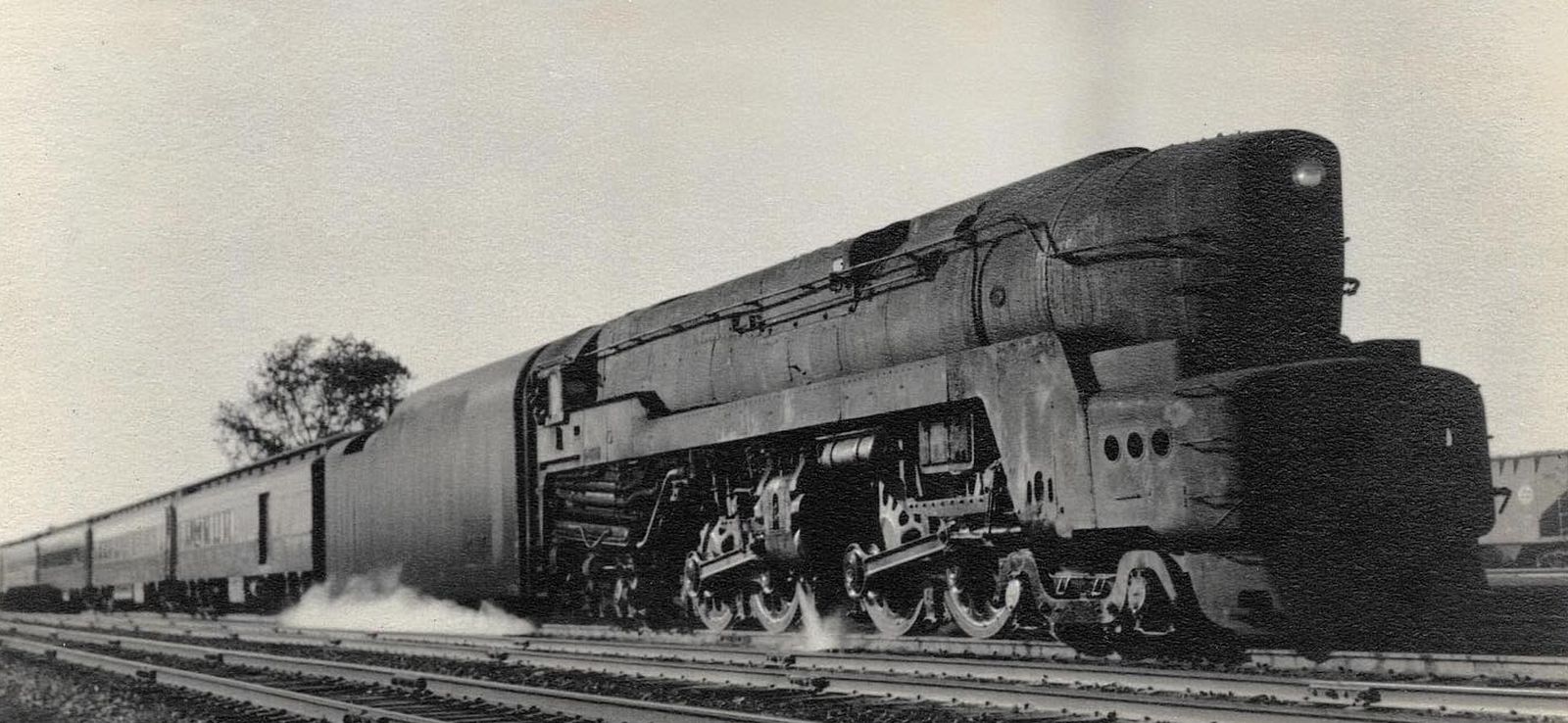After the S1 built at the Altoona Works proved too large and of little practical use, Baldwin built the first two prototypes of the T1 for the PRR during World War II. The reason for purchasing such large express locomotives was that the trains had become heavier and heavier and the K4 class Pacifics used often had to be used double-headed. Like the S1, the T1 was of the duplex type and was streamlined by designer Raymon Loewy.
The two separate engine groups in one frame were necessary because large moving masses were created with a large wheel diameter and four coupled axles. These stressed the crew of the locomotive and exerted large impacts on the track. For this reason, conventional three- and four-cylinder engines were used in large express locomotives in other countries, which were unpopular in the USA due to the poor accessibility of the inner cylinders.

No. 5507 in December 1945 with a passenger train exiting Chicago
collection Taylor Rush
The special feature of the T1 was that two two-cylinder engines, each with two coupled axles, were located one behind the other in a common frame. The biggest disadvantage of the duplex engines was the increased tendency to slip. If one engine group started to slip, the crew could not tell which axles were slip with the help of the exhaust blasts, and they had to be very sensitive with the throttle, especially with such powerful locomotives. For this reason, the rear bogie of the second prototype was designed as a switchable booster to increase the adhesive weight when starting.
When the construction of passenger steam locomotives was possible again after the end of the Second World War, the PRR ordered 50 production machines without boosters. They were significantly more suitable for everyday use than the S1 and still achieved an output of more than 6,000 hp. This enabled them to pull trains weighing around 1,000 tons at 100 mph without any problems and is said to have reached a regular speed of 120 mph to make up for delays. As with the T1, there are unconfirmed reports of trips in excess of 125 mph. The PRR's decision in 1948 to convert all high-value passenger trains to diesel had a negative impact on the service life of the T1. This was also be implemented in a timely manner, so that all T1s were already retired between 1949 and 1952 and subsequently scrapped.
The organization “The T1 Trust” was founded with the aim of building a working T1 from the ground up. Work began in 2014 and by 2020 large parts of the boiler, the driver's cab, parts of the fairing and two coupled wheels had already been completed. An eight-axle model was bought as a tender, which comes from an M1 and is to be provided with a streamlined fairing. After the planned completion in 2030, the locomotive should be used regularly and help to reconstruct the true performance of the originals. With a targeted maximum speed of 140 mph, the previous speed records for steam locomotives are to be broken. In January 2022, the organization said it was 39.1 percent complete on the loco.